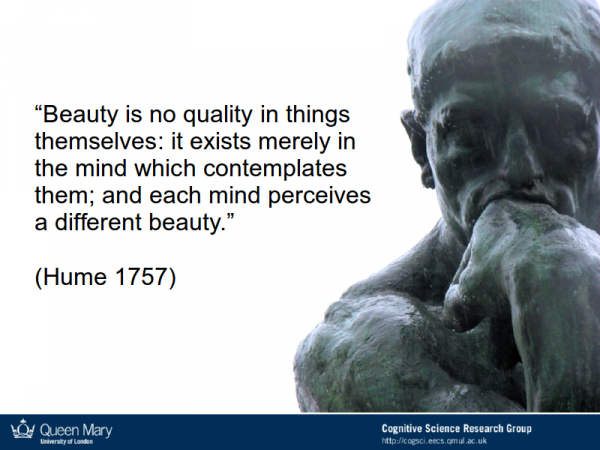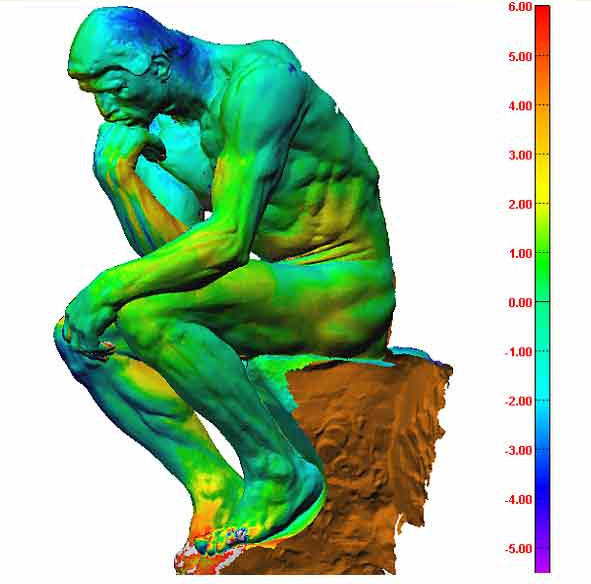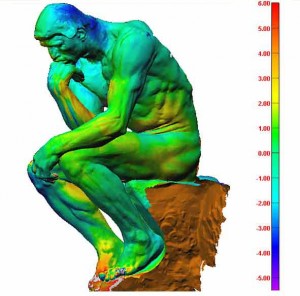ICCA 2014 and the Future(ology) of CA

Summary:
- A brief account of my experience of ICCA 2014 (the 4th International Conference on Conversation Analysis).
- Tips gleaned about how to present interactional data analysis in 20 minues.
- What I learned about terminology in the analysis and presentation of CA research.
- A little reflection on what ICCA 2014 meant for the origins and future of CA.
Introduction
In The Futurological Congress (1971) by Polish science fiction author Stanislaw Lem the protagonist attends a meeting of 70,000 researchers in the increasingly popular discipline of Futurology. There are so many Futurologists these days that they can’t possibly all give their papers in full, so they are assigned index numbers, then when it’s their turn to present they stand up and say the number. Of course there also isn’t time for questions, so all questions have to be submitted in advance and delivered by the questioners standing up and saying the number. Then the speaker may respond with the index number of their response and so on.
ICCA 2014 at UCLA was not quite at this stage yet, but it was still an awesome experience to see 500 Conversation Analysts and Ethnomethodologists from around the world gathered to present papers to one another in one of nine concurrent sessions, each paper containing a series of line-numbered transcripts of spates of interaction each of which – in themselves – could have been the subject of an entire day’s workshop.
Having watched something like 50 presentations in 4 days, with a vast range of styles and approaches, the purpose of this post is to collate tips and ideas for presentation of this kind of research, as well as provide those who weren’t able to be there with a brief impression of what ICCA 2014 was like to attend.
Overall Impressions of ICCA 2014
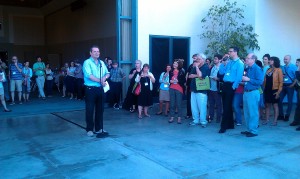
Firstly, a brief impression, which I hope will dispel any negative implication in my referencing Lem’s sci-fi satire in the introduction. This was an extraordinarily well organised and enjoyable event. The venue, the programme, the facilities, and all the important basics were so well organised, they appeared seamless. Sessions progressed on time and with a cooperative and collegial atmosphere that everyone – especially the heroic session chairs, graduate helpers and local organisers – worked so hard to maintain. Despite its size and the diversity of approaches to the study of human interaction, my overall sense was that this conference served an unusually cohesive research community with a strong set of methodological and philosophical alignments. This became most evident to me when I realized – after fretting over having to hop between the 9 concurrent sessions to catch everything I wanted to see – that I could just as well stay put in one session, or walk into almost any other one and still find something interesting and comprehensible to me going on in every room. This is a real contrast with other conferences I’ve attended, especially in a Computer Science context where the widespread intra-field specialization means that walking into the wrong session might result in having to sit and listen to an hour of highly technical niche gibberish.
The panels I enjoyed most used this double aspect of EM/CA’s ethnographic subject-diversity and its methodological coherence to great effect. For example Arnulf Depperman’s excellent sessions on ‘Disjunct and convergent temporalities and the coordination of action’ brought together Jürgen Streeck’s work on the postural configurations of car mechanics at work, Dirk vom Lehn’s work on gallery and museum visiting, as well as Depperman’s own research into driving instruction, and Sae Oshima’s analysis of the interactional dynamics of stylists and clients as they come to the evaluation-relevant endpoint of a haircut. This was one of the most powerful examples to me of how very different interactional contexts and activities, looked at together with different analytic foci, can cohere by allowing a sense of the stable underlying structure of natural human interaction and conversation to emerge from the mix.
Two approaches to presenting (and doing) interaction analysis
Having mentioned ‘methodological coherence’, I should also point out that there were very different approaches and methods too, and they were also presented quite differently. The most obvious differences in overall approach were somewhat similar to the different dimensions of distinction in CA drawn by Emmanuel Schegloff (1996) in his paper on person reference between single case and interaction-oriented analyses on one hand, and aggregate and system-oriented analyses on the other. While these distinctions were not always entirely clear in the 20 minutes most people had to present, it became clear to me that the best presentations were the ones that chose a style to match this aspect of their analytic approach.
Here are some tips based on the best of each type of presentation that I saw. Some are common knowledge or are gleaned along with my reading of the King’s group’s excellent book on video analysis (Heath, Hindmarsh & Luff 2010).
Tips for presenting single case / interaction-oriented analyses
- Get to the data almost immediately, show first then tell.
- Make the context descriptions as integrated into the presentation as possible, and always illustrated with visible examples.
- Make time to show the same clip as many times as possible at multiple speeds.
- Don’t sit still – physically demonstrate and illustrate the embodied actions that are being talked about.
- Show clips with and without audio, but make sure to use the volume control when speaking over the video otherwise its impossible to hear.
- Avoid using transcripts, or if necessary use subtitles to avoid splitting audience focus between page and screen.
- If there are transcripts/cartoons/diagrams, show those first, then the video so the audience knows what to look for and gets the satisfaction of seeing it.
Jon Hindmarsh’s presentation was an excellent example of this approach. He showed the same clips on silent repeat while he walked around talking and gesticulating about them animatedly. He also returned to the same clips at the beginning and end of his session, giving us the opportunity to see our perception of the action in the clips changing as we heard his analysis. The final time we saw it at the end was quite powerful for this reason.
Tips for presenting aggregate / system-oriented analyses
- Make clips and transcripts as short and concise as possible, just focus on the phenomenon in question.
- If there is important stuff earlier or later on in the interaction, show it on screen using subtitles/animation.
- Make introductions pithy and descriptive, but don’t spend too long on them. If relationships etc. are important, do a diagram.
- When showing an interactional effect, show it not happening too. Standard practices should be demonstrated alongside deviant cases.
- When going through the analysis, only talk about details relevant to the phenomenon. A presentation is not the place for a comprehensive analysis, and it’s distracting from the main point.
- Be extra careful not to run out of time. Almost all the presentations ran out of time, and whereas I could still get a lot from a badly timed interaction-oriented analysis, it was really hard to make sense of aggregate analyses that never completed their narrative arc.
- Don’t show video if the analysis does not depend on it.
Alexa Hepburn and Paul Drew’s paper on absent apologies was a great example of an aggregate analysis of a phenomenon that – by virtue of its absence – required both deviant and non-deviant cases to be presented in a kind of drip-drip of evidence, building up to an aggregate view of the phenomenon. Along the way there were lots of mini-system insights into how the mechanisms of accounting and accountability for apologies work in different ways, and although they did run out of time a bit, they were able to skip several of the deviant cases to complete the overall picture and reach the phenomenon in question. They also had excellent transcripts which included the ethnographic glosses so you could also reconstruct the missing pieces of the puzzle from the data after the fact.
The most important thing I learned at ICCA 2014
In Lem’s novel, the academic discipline of futurology is based on a practical extrapolation of Sapir-Whorfian notions of language being a necessary prerequisite for rendering the world intelligible through thought. The practice of futurology involves future-casting by a kind of reverse-etymology. Futurologists come up with new words and phrases and evaluate them for their potential meaningfulness. The idea is that if your phrase is semantically loaded and suggestive of other, related terminologies, it may at some point come to mean something. The implications of those potential meanings are then the concern of futurologists.
Alongside a fantastic series of pre-conference workshops, graduate students were invited to sign up to have lunch with a group of CA grandees. I was thrilled to get (literally) a ticket to talk with Anita Pomerantz – whose work was the starting point for my entire PhD thesis. It was great to meet and thank her in person for that, and very interesting to hear what she had to say when I insisted she give us some sage advice (her own very gracious approach was to focus on us and our research interests). Notably, she said “don’t use the term preference”, and went on to advise against using terms like “adjacency pair” and all the other bits of terminology established analytically by her first generation of CA people.
This intrigued me, as she is often credited with initiating a whole rich seam of work on preference and dispreference with her work on compliment responses (1978) and second assessments (1984). She explained that she was telling us to avoid using these words as shortcuts to, or even replacements for a proper analysis. I have heard similar things from others in her generation, for whom using these terms must feel very different given that they had to do the analytic work first to clarify and then invent them.
As the conference proceeded, I got a very tangible sense of why this advice is so important. Very often I saw people presenting great research, but peppering their presentations with these kinds of keywords, usually needlessly. These terms are useful, especially for structuring training and disciplined analysis, and for spreading knowledge about CA and its inner workings. It’s hard to imagine a CA textbook not including a full description of adjacency pairs or preference organization. However, their use in this context mostly seemed aimed at expressing group membership rather than contributing to the analysis at hand.
So, given that this was my first CA conference, the key thing I learned at ICCA 2014 was that it’s only worth naming these analytic terms in presentations of research findings where they are absolutely salient to the analysis and phenomena at hand. The transcripts and the data are presented so that other researchers who are familiar with CA methods can challenge the conclusions drawn from them. All the CA terminology is a vital but essentially back-room business that doesn’t need to feature in the presentation of findings at all.
The Future(ology) of CA
Given the breadth and diversity of the research presented at ICCA 2014, it’s difficult to sum it up in anything other than a very partial and subjective way. Having said that, there were a few moments and aspects of the event that suggested some interesting potential directions of contemporary CA.
Firstly, there was a set of presentations in the ‘Hybrids Heretics and Converts’ category that had its own panel on the Friday. Unfortunately I missed most of this, but had the chance to speak to some of the presenters and their colleagues – many from the Max Planck Institute for Psycholinguistics in Nijmegen, and most supervised by Stephen Levinson. The presentations I did see had a distinctive style and structure, familiar to me from hypothetico-deductive models of presentation that I see in my home disciplines of Computer Science and Engineering. I was pleased to see Schegloff in these panels, respectfully engaged with (mostly) young researchers, offering constructive critique. One of his criticisms of much of the experimental work presented was that it tended to focus on moments of experimentally-salient (but interactionally isolated) conversational structure. His argument was that talk is densely layered and interconnected, and that by isolating temporal fragments of talk from continuous processes of interaction, all that contextual interconnection is lost. It was great that there was space for debate focussed on these issues that extend from long-running questions of quantification in the study of human interaction, which is especially healthy given the quantitative (though not yet widespread experimental) turn in recent prominent CA work.
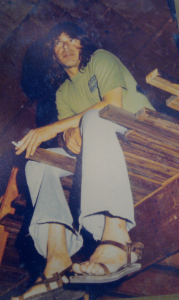
Secondly, the ISCA general meeting was interesting for me, as a neophyte, to find out more about CA as an organisational project, and get a feel for its origins and future. It was lovely to see Schegloff being awarded an honour for lifetime achievement, and the speeches and presentations were moving, especially given that this is the 40 year anniversary of what is often seen as the founding of the discipline with Sacks Schegloff and Jefferson’s 1974 turn-taking paper. There was also a fantastic exhibition entitled “Order at All Points: The Work of Harvey Sacks” in the Young library featuring key papers, letters, photos and artifacts from the Sacks archive. Alongside these celebrations, ISCA chair John Heritage set out that the focus of the next four years would be on developing and disseminating more educational resources in CA – and he announced that Schegloff was very generously donating all his transcripts, course notes, assignments and recordings to ISCA for publication. While many people whooped and cheered at this bit, Schegloff turned around in his seat at the front and hooted “Yo:::u’ll be S^OrE:::e,” at the crowd.
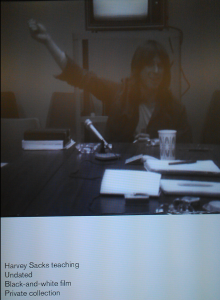
Finally, the ICCA baton was passed from ICCA 2014 lead organiser Tanya Stivers to conference chair Paul Drew at Loughborough where the 2017 conference will take place, with Lorenza Mondada also announcing that there would be an interim ISCA-sponsored conference in Basel in 2015 entitled ‘Revisiting Participation’. Given how much I enjoyed and got out of ICCA 2014, I’m very much looking forward to those.
References
- Heath, C., Hindmarsh, J., & Luff, P. (2010). Video in qualitative research: analysing social interaction in everyday life. Sage Publications.
- Lem, S. (1985). The Futurological Congress (from the Memoirs of Ijon Tichy). Harcourt Brace Jovanovich.
- Schegloff, E. A. (1996). Some Practices for Referring to Persons in Talk-in-Interaction: A Partial Sketch of a Systematics. In B. Fox (Ed.), Studies in Anaphora (pp. 437–85). Amsterdam: John Benjamins Publishing Company.
- Pomerantz, A. (1978). Compliment responses: Notes on the co-operation of multiple constraints. In J. Schenkein (Ed.), Studies in the organization of conversational interaction. Academic Press.
- Pomerantz, A. (1984). Agreeing and disagreeing with assessments : some features of preferred / dispreferred turn shapes. In J. M. Atkinson (Ed.), Structures of social action: Studies in Conversation Analysis (pp. 57–101). London: Cambridge University Press.
ICCA 2014 and the Future(ology) of CA Read More »
